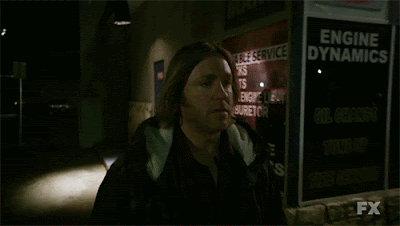Copyright 2009 by Gary L. Pullman

Figure 1. Double exposure
Source: The Skeptic's Dictionary
For various reasons, from humanity’s earliest days, the spirits of the dead, or ghosts, are alleged to have visited the living. Some return to avenge the murder, other to warn loved ones of impending catastrophes, and still others to assuage guilt so powerful that it has survived the grave. If one can believe the stories associated with ghosts, they have haunted everything from ancient graveyards and medieval castles to modern mansions and hotels. Short story writers, novelists, and screenwriters would have their readers and audiences believe that some ghosts have a sense of humor while others are somber, indeed. They have appeared in literary works as diverse as William Shakespeare’s
Hamlet and
Macbeth, Charles Dickens’
A Christmas Carol, H. G. Wells’ “The Red Room,” Henry James’
The Turn of the Screw, Mark Twain’s “A Ghost Story,” Stephen King’s
The Shining and
Bag of Bones, and Dean Koontz’s
Odd Thomas. Ghosts have appeared as guest stars, so to speak, in such movies as
Topper,
Poltergeist,
Beetlejuice,
Ghost Busters, The Sixth Sense,
The Others,
An American Haunting, and many others, and in episodes such television shows as
The Ghost and Mrs. Muir,
Bewitched,
Buffy the Vampire Slayer, and
Ghost Hunters. There’s no doubt about it: ghosts have not only been reported throughout history, but they have also enjoyed plenty of airtime. The virtual omnipresence of ghosts is curious when one considers that such entities may not actually exist. Although men and women who believe in the existence of ghosts offer such evidence for their existence as eye-witness reports, photographs, electronic voice phenomena, abrupt temperature drops, and sudden increases in electromagnetic radiation, this evidence can be explained without reference to the entities that are supposed to cause them, which makes the actual existence of ghosts questionable at best.
Since the beginning of time, people have claimed to have seen ghosts, and believers in the existence of spirits of the dead declare that so many people couldn’t be deceived or lying in providing eye-witness testimony. It does seem likely that some--perhaps many--such eyewitnesses really do believe that they have seen ghosts. Seeing isn’t believing, though, or shouldn’t be. Scientists regard eyewitness testimony, or anecdotal or testimonial evidence, as they prefer to call it, as being notoriously unreliable. In “anecdotal (testimonial) evidence,” an Internet article concerning such evidence, Robert T. Carroll points out that “anecdotes are unreliable for various reasons,” including the distortion that occurs as accounts are told and retold, exaggeration, confusion regarding “time sequences,” “selective” memory, misrepresented “experiences,” and a variety of other conditions, including the affect upon their testimony that “biases, memories, and beliefs” have. Carroll also suggests that gullibility, “delusions,” and even deliberate deceit also make such testimony “inherently problematic and usually. . . impossible to test for accuracy.”
Most people who investigate reports concerning the presence or appearances of ghosts also seek to photograph them. It has been said that cameras do not lie, but the problem with photographic evidence is that it is easy for photographers to doctor film. In his Internet article concerning “spirit photography,” James Randi gives an example of a rather crude attempt by some spiritualists to fool folks into believing they’d captured the apparition of the deceased author of the Sherlock Holmes short stories, Sir Arthur Conan Doyle, who, as himself a spiritualist, was a frequent focus of “spook-snappers” who “claimed to summon him up after his death in 1930.” The problem, Randi says, with their evidence is that it is “apparently a cut-out of a reversed photo placed in what appears to be cotton wool”; otherwise, the spirit photograph “agrees in detail, lighting, and expression with the original” photograph of the Doyle which was taken in the author’s “prime” (“spirit photography”). In other words, the photograph is a fake. A favorite technique among those who create fake spirit photographs, Carroll points out, is the “double exposure,” an example of which appears on the article’s webpage (see Figure 1). A double exposure occurs when the same film is exposed to first one, and then another, object, with the result that the image of the second object overlays or overlaps the image of the first object; both images appear to have been photographed together, at the same time and in the same place. However, pictures of supposed ghosts sometimes result from the photographer’s own incompetence or “natural events,” rather than deliberate deceitfulness, Carroll concedes, including
various flaws in camera or film, effects due to various exposures, film-processing errors, lens flares (caused by interreflection between lens surfaces), the camera or lens strap hanging over the lens, effects of the flash reflecting off of mirrors, jewelry. . . light patterns, polarization, [or] chemical reactions.
When deliberate deceit occurs, photographers may also use graphic art software or computer graphics software to deliberately manipulate photographs that are uploaded from the camera, into a computer.
If neither eyewitness testimony nor photographs prove the existence of ghosts, perhaps electronic voice phenomena, or EVP, do so. A sophisticated term for tape-recorded voices, EVP demonstrate the presence of ghosts, some contend, since sensitive instruments have recorded the disembodied voices of apparitions. However, as Carroll indicates, in his Internet article, “electric voice phenomenon,” skeptics point out that such sounds may not be voices at all, but may be nothing more than the results of “interference from a nearby CB [citizen’s band radio] operator or cross modulation”--one radio station transmitting over another station’s broadcast. Likewise, EVP may be nothing more than a listener’s interpreting “random noise” as the statements of a disembodied voice or voices. In the same Internet article, Carroll cites the explanation for this tendency by Jim Alcock, a psychologist: “When our brains try to find patterns, they are guided in part by what we expect to hear. . . . People can clearly ‘hear’ voices and words not just in the context of muddled voices, but in a pattern of white noise in which there are no words at all.” It seems that, for these reasons, EVP is just as problematic as the proof of ghosts’ existence as eyewitness reports and photographs have been shown to be.
Perhaps the abrupt drop in temperature that some ghost hunters have both felt and recorded will prove more convincing evidence of the existence of the spirits of the dead. According to an anonymous “paranormal researcher,” who writes, in answer to a question posted on Yahoo! Answers, it is believed that such “cold spots” result from ghosts’ draining of energy sources, such as electricity, as a means to produce sounds or to speak. Supposedly, the energy they draw from the environment heats their own energy, but this heat is then dissipated by the sound effect the ghost produces with this borrowed energy. Neither this researcher nor any other seems able to explain how a disembodied spirit--that is, an entity that has no lips, teeth, tongue, vocal cords, or lungs--can speak, even if it does help itself to ambient energy sources. Once again, Carroll finds such evidence to be less than persuasive. In his Internet article, “ghost,” he notes that “many people report physical changes in haunted places, especially a feeling of a presence accompanied by temperature drop and hearing unaccountable sounds” and agreeing that such people “are not imagining things,” he, nevertheless, discounts the notion that ghosts are responsible for these phenomena. Instead, he says,
Scientists who have investigated haunted places account for both the temperature changes and the sounds by finding physical sources of the drafts, such as empty spaces behind walls or currents set in motion by low frequency sound waves (infrasound) produced by such mundane objects as extraction fans.
Sudden increases in electromagnetic radiation is “produced by such things as power lines, electric appliances, radio waves, and microwaves,” Carroll observes, in his Internet article “EMF (EMT).” Therefore, he adds, the idea that ghosts somehow cause such radiation seems unlikely, and, indeed, “some think that electromagnetic fields are inducing the haunting experience” (“ghost”).
Occasionally, as a Halloween feature, some newspapers or television shows spotlight a supposedly haunted house. The ghostly phenomena are described, and then a natural explanation is provided for each of the supposedly supernatural elements of the tale. One such account, by Cathy Lubenski, appeared under the title “When your house has spooks, who are you going to call” in
The San Diego Union-Tribune. Her story included reports of slime oozing from walls, cold spots, lights flashing on and off, doors opening by themselves, knocking inside walls, foul odors, and howling. Were one living in a house in which such phenomena were occurring, it might well seem that the residence was indeed haunted. Instead, each of these phenomena had a natural cause, not a supernatural origin. The slime was from a bee’s nest in the attic; the cold spots resulted from an air-conditioner unit’s return airflow; the stench was an effect of dead rats in the wall and trapped sewer gas; the howling was the wind, blowing down a vent. Philosophers advise people to adopt the principle of Occam’s razor, which says, essentially, that one should never consider more possible causes than the number that are necessary to explain why something happens. As Carroll points out, “Occam’s razor is also called the principle of parsimony,” and “it is usually interpreted to mean something like ‘the simpler the explanation, the better’” or “as most people would put it today, ‘don’t make any more assumptions than you have to.’” To demonstrate the principle, Carroll offers this example: “[Erik] Von Däniken could be right: maybe extraterrestrials did teach ancient people art and engineering, but we don't need to posit alien visitations in order to explain the feats of ancient people.” Therefore, according to Occam’s razor, one should not attribute “art and engineering” to the human intelligence and ingenuity that men and women develop as the result of their evolutionary, genetic and environmental inheritance. The same applies, of course, with respect to ghosts. The fact that eye-witness reports, photographs, electronic voice phenomena, abrupt temperature drops, and sudden increases in electromagnetic radiation that have been cited as evidence for the existence of ghosts can be explained without reference to these supernatural entities, making which are supposed to cause them makes the actual existence of ghosts questionable at best. Therefore, one can conclude that it is more likely that ghosts do not exist than to suppose that they do. Nevertheless, some are likely to believe in them because they add mystery to the everydayness of ordinary life, they suggest that there is some sort of existence after death, and they make interesting literary and dramatic characters that enliven short stories, novels, and movies. Likewise, they are convenient symbols of such emotional and psychological states and experiences as guilt, the memory of traumatic past experiences, and of actual historical events. In the sense that human beings are, to some extent, products of their own previous experiences and of historical affairs, they are haunted, after all--by the ghosts of their pasts.
Works Cited
Carroll, Robert. "anecdotal (testimonial) evidence."
The Skeptic's Dictionary. 23 Feb 2009. 22 May 2009
http://www.skepdic.com/testimon.html.
---. "electronic voice phenomenon (EVP)."
The Skeptic's Dictionary. 23 Feb 2009.
http://www.skepdic.com/evp.html.
---. "EMF (EMR)."
The Skeptic's Dictionary. 23 Feb 2009. 22 May 2009
http://www.skepdic.com/emf.html.
---. "ghost."
The Skeptic’s Dictionary. 23 Feb 2009. 22 May 2009
http://www.skepdic.com/ghosts.html.
"I believe spirits use energy to communicate with us. But which energy sources?."
Yahoo! Answers. 2009. Yahoo!. 22 May 2009
http://answers.yahoo.com/question/index?qid=20080819160007AAjvMQ7.
Lubenski, Cathy. "When your house has spooks, who are you going to call."
The San Diego Union-Tribune 29 Oct 2000: C6. Print.
Randi, James. "spirit photography."
An Encyclopedia of Claims, Frauds, and Hoaxes of the Occult and Supernatural . 2007. James Randi Education Foundation. 22 May 2009
http://www.randi.org/encyclopedia/spirit%20photography.html




































